
Picture Window Books
1710 Roe Crest Drive
North Mankato, Minnesota 56003
www.capstonepub.com
Copyright 2007 by Picture Window Books
All rights reserved. No part of this book may be
reproduced without written permission from the
publisher. The publisher takes no responsibility
for the use of any of the materials or methods
described in this book, nor for the products thereof.
Library of Congress Cataloging- in- Publication Data
Dixon, Dougal.
Spinosaurus and other dinosaurs of Africa / by
Dougal Dixon ; illustrated by Steve Weston &
James Field.
p. cm. ( Dinosaur find)
Includes bibliographical references and index.
ISBN- 13: 978- 1- 4048- 2260- ( library binding)
ISBN- 10: 1- 4048- 2260- ( library binding)
ISBN- 13: 978- 1- 4048- 2266- ( paperback)
ISBN- 10: 1- 4048- 2266- ( paperback)
ISBN: 978-1-5158-5614-6 (eBook) Dinosaurs-- Africa-- Juvenile literature. I. Weston,
Steve, ill. II. Field, James, 1959- ill. III. Title.
QE861.5. D649 2007
567.9096-- dc22 2006028004
Acknowledgments
This book was produced for Picture Window Books by
Bender Richardson White, U. K.
Illustrations by James Field ( cover and pages 5, 9,
13, 17, 19) and Steve Weston ( pages 7, 11, 15, 21).
Diagrams by Stefan Chabluk.
Photographs: Digital Vision pages . istockphotos
pages ( Simone van den
Berg), ( Vladimir Pomortsev),
( Nick Berrisford).
Consultant: John Stidworthy, Scientific Fellow of
the Zoological Society, London, and former
Lecturer in the Education Department, Natural History
Museum, London.
Reading Adviser: Susan Kesselring, M. A., Literacy
Educator, Rosemount Apple Valley Eagan
( Minnesota) School District
Chicken
feet ( centimeters) tall
Weight pounds ( 2.7 kilograms)
Adult person
feet ( 1.8 meters) tall
Weight pounds ( 76.5 kg)
Elephant
feet ( m) tall
Weight 12,000 pounds
( 5,400 kg)
Types of dinosaurs
In this book, a red shape at the
top of a left- hand page shows
the animal was a meat- eater.
A green shape shows it was
a plant- eater.
Just how big or small
were they?
Dinosaurs were many different
sizes. We have compared their
size to one of the following:

T ABLE OF C ONTENTS
W
HATS
I NSIDE ?
Dinosaurs! These dinosaurs lived in
places that now form Africa Find out
how they survived millions of years ago
and what they have in common with
todays animals

L IFE IN A FRICA Dinosaurs lived between million
and million years ago. The world did
not look the same then. Much of the
land and many of the seas were not in
the same places as they are now. Today,
Africa is famous for its animal life. In
dinosaur times, many animals lived in
the region, but they were quite different.
A distant herd of Ouranosaurus were stalked by
two ferocious Spinosaurus. These dinosaurs, in
turn, were hunted by the fierce Rugops. Life as a
dinosaur could be very dangerous in the land
that is now Africa!


B RACHYTRACHELOPAN
Pronunciation:
BRACK- i- tratch- eh- LOW- pan
Brachytrachelopan was an odd
creature. It was a close relative of
long- necked, plant- eating dinosaurs,
but it had a short neck. Instead of
eating from the tops of tall trees like
its relatives, this dinosaur grazed on
small plants.
Grazing today
Modern horses graze on
grass. They bow their
heads low to eat, much
like Brachytrachelopan
did long ago.
Size Comparison

A family of Brachytrachelopan
fed together in open ground.
They ate the low- growing
and plants called .

R UGOPS
Pronunciation:
ROO- gops
Rugops was built to be a meat- eater.
Forceful hind legs helped it chase
down . Then it used strong hands
and long to grab and tear into
the animals it hunted. Powerful jaws
and sharp teeth also helped Rugops
at feeding time.
Fierce teeth today
Modern bears use their teeth
and claws to kill animals
and to tear flesh from bones,
much like Rugops did millions
of years ago.
Size Comparison

With powerful legs, a large body, and
pointed teeth, Rugops was a frightening
sight. Its growls and grunts probably
made it even more fearsome.

P ARALITIAN Pronunciation:
PAR- uh- LEE- tye- TAN
What a monster! Paralititan is
believed to have been the biggest
of the African dinosaurs. Paralititan
lived near the coasts. It probably
crossed the wide mouths of rivers
to reach feeding grounds on the
opposite banks.
Big swimmers today
Despite their size, modern
elephants can wade and
swim across rivers when
looking for food, much like
Paralititan once did.
Size Comparison

Paralititan was big and strong.
It could wade shoulder- deep
through water, where few other
dinosaurs would follow.

K ENTROSAURUS
Pronunciation:
KEN- tro- SAW- rus
Kentrosaurus was an
dinosaur. It had two rows of pointed
running the length of its neck
and back. Kentrosaurus also had
spikes sticking out of its shoulders
and tail. It used this armor to fend
off enemies.
Big, fast runners today
Wildebeests are big
plant- eaters that can
move very quickly to
escape danger, just as
Kentrosaurus did.
Size Comparison

Although weighed down by its armor,
Kentrosaurus could move quickly to
escape a forest fire. Other speedy
dinosaurs would join the run to safety.


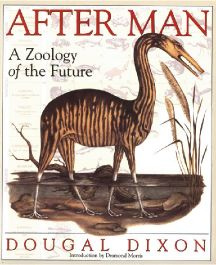
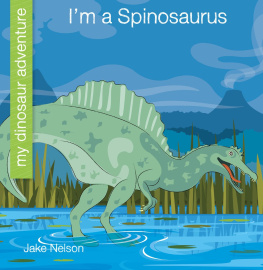
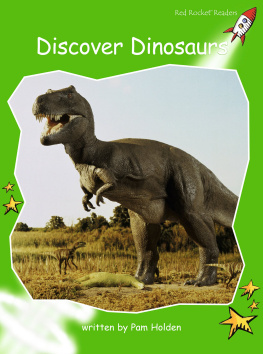

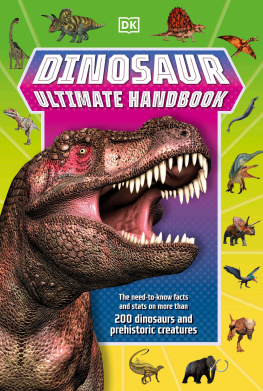
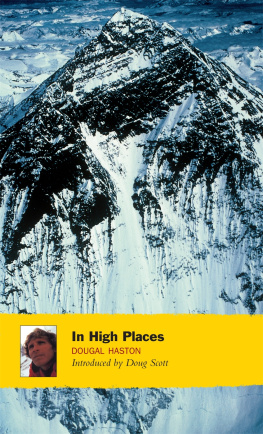
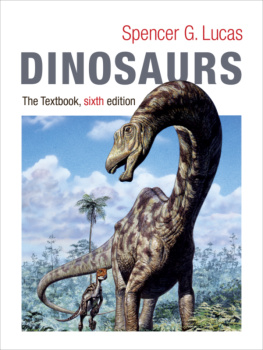
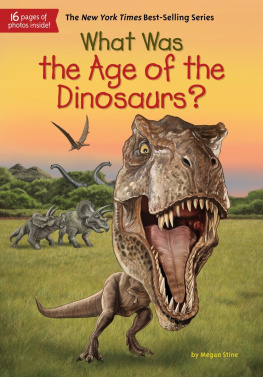







 A family of Brachytrachelopan
A family of Brachytrachelopan
 With powerful legs, a large body, and
With powerful legs, a large body, and
 Paralititan was big and strong.
Paralititan was big and strong.
 Although weighed down by its armor,
Although weighed down by its armor,